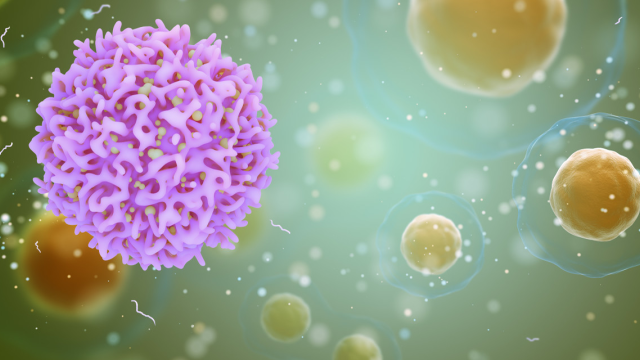近年来,无论是发达国家,还是发展中国家,炎症性肠病(IBD)的发病率都不断增减。近期的研究表明,功能寡糖可能可以通过多种方式缓解IBD。
今天,我们共同关注功能寡糖与IBD。希望本文能够为相关的产业人士和诸位读者带来一些启发和帮助。
炎症性肠病(Inflammatory bowel disease,IBD)是一种慢性的炎性胃肠道疾病,其特征包括黏膜结构发生破坏,肠道微生物失衡紊乱和全身生化指标异常1。IBD主要分为溃疡性结肠炎和克罗恩病两种疾病亚型。
目前炎症性肠病的致病机制仍不明确,现有研究表明该病可能是由遗传易感、肠屏障受损、肠道菌群紊乱、肠道炎症反应过度激活以及氧化应激等多种因素相互作用导致的2-4。
近十年来IBD发病率在全球范围内逐年增加,发达国家的发病率尤其高5。不过,随着全球化发展趋势,IBD逐渐在发展中国家变得越来越普遍,据中国疾病预防控制中心统计,2014年中国IBD患者约为35万人,预计到2025年,患者数将突破150万。此外,研究还发现,IBD与结肠癌之间存在着密切关联,因为炎症是导致结肠癌发病的关键因素之一6,因此对IBD的治疗和防控刻不容缓。
而目前用于治疗IBD的方法有微生态调节治疗、手术治疗、药物治疗等。总的来说,现有的临床治疗药物能够在短期内缓解IBD患者的症状,但由于副作用大、复发率高、容易产生耐药性等问题,针对肠炎的长期治疗效果并不理想7-9。因此,急需开发对IBD有效且副作用小的新疗法。

肠道作为人体重要的消化器官,负责营养物质的消化和吸收,并通过肠道屏障防止致病菌和毒素等有害物质通过肠道进入循环系统10-12。肠道屏障受损可能会引发无法控制的免疫反应,或导致肠道内的微生物无节制地生长,从而导致各类疾病的发生。
尽管IBD的确切病因尚不清楚,但肠屏障功能的完整性已被证明在其发病机理中起关键作用。越来越多的证据表明,肠屏障功能完整性可能是肠道在IBD致病过程中至关重要的评价指标13,有些学者甚至认为IBD是一种障碍性屏障疾病。
其中定植于肠道的微生物被认为是肠道的生物屏障,其主要分布在粘液外层,具有宿主细胞所缺乏的分解碳水化合物的酶,能够积极地参与人体内营养代谢过程,将碳水化合物转化为有用代谢产物14。除代谢功能外,肠道中有益共生菌可以保护宿主黏膜,并促进黏膜修复,因此近年来也有学者开始关注肠道微生物组对IBD的正向调节作用。
功能寡糖作为一种宿主不可消化的可发酵纤维,可以给宿主的肠道带来有益影响,多项研究的结果表明,功能寡糖可以通过维护和修复肠道屏障、调节肠道微生物组达到缓解肠道损伤、治疗IBD的作用15-18。

据报道,功能寡糖可以通过调节肠道上皮细胞的通透性和完整性,直接恢复肠屏障功能,达到治疗IBD的效果。研究人员发现在饲粮中添加不同浓度水平的纤维寡糖对仔猪的肠黏膜通透性有改善作用19。具体来讲纤维寡糖可以通过提高结肠上皮细胞跨膜电阻,降低肠上皮对荧光素异硫氰酸酯-葡聚糖的通透性,从而对结肠黏膜屏障起到维护与改善作用。
此外也有报道发现壳寡糖(COS)治疗可以上调糖尿病小鼠近端结肠中紧密连接相关蛋白occludin表达20,同时缓解DSS诱导的IBD小鼠的粘液缺陷,对溃疡性结肠炎小鼠肠黏膜屏障功能起到保护作用21。但功能寡糖调节肠道上皮细胞稳态的机制尚未得到充分挖掘,其对IBD的治疗作用的普适性也有待验证。
从机制上讲,功能寡糖对肠道微生物组的调节作用基于肠道微生物的发酵作用。功能寡糖在肠道发酵会产生短链脂肪酸(SCFA)。SCFA 的产生可以抑制病原微生物的生长,降低pH 值,防止肽的降解和有毒化合物的形成,进而抑制不良细菌酶的活性,缓解IBD症状22。
同时功能寡糖在肠道中的存在也可以增加驻留的益生菌菌株,有研究发现,COS 在动物体内发酵可以增加阿克曼菌(Akkermansia)的数量23,阿克曼菌可以阻止代谢性内毒素血症的发展,可有助于恢复正常肠道黏液层厚度。
值得注意的是,不同的功能寡糖对益生菌的促生长效果不一,如在低聚果糖(FOS)、低聚半乳糖(GOS)和低聚木糖(XOS)等不同寡糖条件下,丁酸盐生产菌株就显示出不同的生长曲线24。同时益生菌生物利用FOS和GOS的代谢途径所涉及的遗传机制已被报道25,26,这些独特的摄入机制使得功能寡糖在调节肠道菌群、治疗IBD中可以发挥出更大的活性27-28。
综上所述功能寡糖不仅可以直接提高肠道上皮细胞的完整性,维持肠道的正常结构。还可以间接促进肠道益生菌的生长定植,维持肠道微生物区系的稳态。同时不同结构的多种功能寡糖均显示出对肠道屏障功能的益处。此外,功能寡糖与益生菌在肠道的互作关系可以起到协同维护肠道健康的效果,因此有必要对功能寡糖装载益生菌的给药策略进行进一步研究,同时完善功能寡糖作为益生元的结构的精准解析、剂量的系统试验及临床个体化医疗的数据收集。
参考文献:
(滑动查看全部)
1. Chelakkot, C.; Ghim, J.; Ryu, S. H., Mechanisms regulating intestinal barrier integrity and its pathological implications. Experimental & molecular medicine 2018, 50 (8), 1-9.
2. Brown, S.J., Mayer, L. The immune response in inflammatory bowel disease[J]. American Journal of Gastroenterology, 2007, 102(9): 2058-2069.
3. Maloy, Kevin, J., Powrie, FionaI. Intestinal homeostasis and its breakdown in inflammatory bowel disease[J]. Nature, 2011, 474(7351): 298-306.
4. Swidsinski,I A, Ladhoff, A., Pernthaler, A., Swidsinski, S,, Loening-Baucke V., Ortner M., Weber J., Hoffmann, U., Schreiber, S., Dietel, M., Lochs, H. Mucosal flora in inflammatory bowel disease[J]. Gastroenterology, 2002, 122(1): 44-54.
5. Chow, D. K. L.; Leong, R. W. L.; Tsoi, K. K. F.; Ng, S. S. M.; Leung, W. K.; Wu, J. C. Y.; Wong, V. W. S.; Chan, F. K. L.; Sung, J. J. Y., Long-term Follow-up of Ulcerative Colitis in the Chinese Population. American Journal of Gastroenterology 2009, 104 (3), 647-654.
6. Cader, M. Z., Kaser A. Recent advances in inflammatory bowel disease: mucosal immune cells in intestinal inflammation[J]. Gut, 2013, 62(11): 1653-1664.
7. Giulia, Roda, Bindia, Jharap, Narula, Neeraj, Jean-frederic, Colombel. Loss of Response to Anti-TNFs: Definition, Epidemiology, and Management[J]. Clinical and translational gastroenterology, 2016.
8. Rasmussen H.E., Hamaker, B.R. Prebiotics and Inflammatory Bowel Disease[J]. Gastroenterol Clin North Am, 2017, 783-795.
9. Sasson A. N., Ananthkrishnan, A.N., RAMAN M. Diet in Treatment of Inflammatory Bowel Diseases[J]. Clinical Gastroenterology and Hepatology, 2019, : .
10. Kaplan, G. G., The global burden of IBD: from 2015 to 2025. Nature Reviews Gastroenterology & Hepatology 2015, 12 (12), 720-727.
11. Ng, S. C.; Shi, H. Y.; Hamidi, N.; Underwood, F. E.; Tang, W.; Benchimol, E. I.; Panaccione, R.; Ghosh, S.; Wu, J. C. Y.; Chan, F. K. L.; Sung, J. J. Y.; Kaplan, G. G., Worldwide incidence and prevalence of inflammatory bowel disease in the 21st century: a systematic review of population-based studies. Lancet 2017, 390 (10114), 2769-2778.
12. Zhang, Y.; Li, J. X.; Zhang, Y.; Wang, Y. L., Intestinal microbiota participates in nonalcoholic fatty liver disease progression by affecting intestinal homeostasis. World Journal of Clinical Cases 2021, 9 (23), 6654-6662.
13. Anonymous. Intestinal barrier in inflammatory bowel disease[J]. World Journal of Gastroenterology, 2014, (5): 1165-1179.
14. Ll, P.A.S., Kumar, A., Samarin, S., Vijay-kumar, M., Kundu, K., Murthy, N., Hansen, J., Nusrat, A., Neish, A.S. Enteric commensal bacteria potentiate epithelial restitution via reactive oxygen species-mediated inactivation of focal adhesion kinase phosphatases[J]. Proc Natl Acad Sci U S A, 2011, 108(21): 8803-8808.
15. Lai, Y. J.; Masatoshi, H.; Ma, Y. B.; Guo, Y. M.; Zhang, B. K., Role of Vitamin K in Intestinal Health. Frontiers in Immunology 2022, 12.
16. Zhou, B. L.; Yuan, Y. T.; Zhang, S. S.; Guo, C.; Li, X. L.; Li, G. Y.; Xiong, W.; Zeng, Z. Y., Intestinal Flora and Disease Mutually Shape the Regional Immune System in the Intestinal Tract. Frontiers in Immunology 2020, 11.
17. Salminen, S.; Collado, M. C.; Endo, A.; Hill, C.; Lebeer, S.; Quigley, E. M. M.; Sanders, M. E.; Shamir, R.; Swann, J. R.; Szajewska, H.; Vinderola, G., The International Scientific Association of Probiotics and Prebiotics (ISAPP) consensus statement on the definition and scope of postbiotics (vol 18, pg 649, 2021). Nature Reviews Gastroenterology & Hepatology 2021, 18 (9), 671-671.
18. Langen, M.; Dieleman, L. A., Prebiotics in Chronic Intestinal Inflammation. Inflammatory Bowel Diseases 2009, 15 (3), 454-462.
19. Szilagyi, A., Use of prebiotics for inflammatory bowel disease. Canadian Journal of Gastroenterology and Hepatology 2005, 19 (8), 505-510.
20. Li, P. H.; Lu, W. C.; Chan, Y. J.; Zhao, Y. P.; Nie, X. B.; Jiang, C. X.; Ji, Y. X., Feasibility of Using Seaweed (Gracilaria coronopifolia) Synbiotic as a Bioactive Material for Intestinal Health. Foods 2019, 8 (12).
21. Sun, X.; Wan, J.; Cao, J.; Si, Y.; Wang, Q., Progress in lytic polysaccharide monooxygenase. Sheng wu gong cheng xue bao = Chinese journal of biotechnology 2018, 34 (2), 177-187.
22. Martens, E.C., Neumann, M., Desai, M.S.. Interactions of commensal and pathogenic microorganisms with the intestinal mucosal barrier[J]. Nature Reviews Microbiology, 2018, 16(8): 457-470.
23. Zhang, C.; Jiao, S. M.; Wang, Z. A.; Du, Y. G., Exploring Effects of Chitosan Oligosaccharides on Mice Gut Microbiota in in vitro Fermentation and Animal Model. Frontiers in Microbiology 2018, 9.
24. Wang, Y. J.; Wen, R.; Liu, D. D.; Zhang, C.; Wang, Z. A.; Du, Y. G., Exploring Effects of Chitosan Oligosaccharides on the DSS-Induced Intestinal Barrier Impairment In Vitro and In Vivo. Molecules 2021, 26 (8).
25. Rawi, M. H.; Zaman, S. A.; Pa'ee, K. F.; Leong, S. S.; Sarbini, S. R., Prebiotics metabolism by gut-isolated probiotics. Journal of Food Science and Technology-Mysore 2020, 57 (8), 2786-2799.
26. Scott, K. P.; Grimaldi, R.; Cunningham, M.; Sarbini, S. R.; Wijeyesekera, A.; Tang, M. L. K.; Lee, J. C. Y.; Yau, Y. F.; Ansell, J.; Theis, S.; Yang, K.; Menon, R.; Arfsten, J.; Manurung, S.; Gourineni, V.; Gibson, G. R., Developments in understanding and applying prebiotics in research and practice-an ISAPP conference paper. Journal of Applied Microbiology 2020, 128 (4), 934-949.
27. Goh, Y. J.; Klaenhammer, T. R., Genetic Mechanisms of Prebiotic Oligosaccharide Metabolism in Probiotic Microbes. In Annual Review of Food Science and Technology, Vol 6, Doyle, M. P.; Klaenhammer, T. R., Eds. 2015; Vol. 6, pp 137-156.
28. O'Donnell, M. M.; O'Toole, P. W.; Ross, R. P., Catabolic flexibility of mammalian-associated lactobacilli. Microbial Cell Factories 2013, 12.


